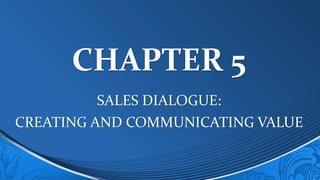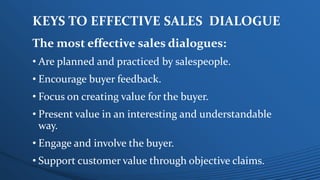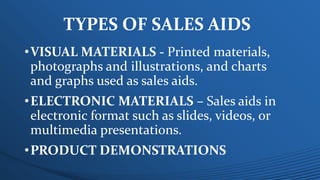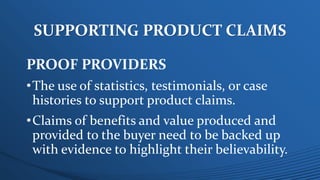The document discusses keys to effective sales dialogue including planning, encouraging buyer feedback through check-backs, focusing on creating value, and engaging the buyer. It covers using questions to understand buyer needs and identify benefits, presenting benefits in an interesting way using examples and media, and supporting claims with proof like statistics and testimonials. Guidelines are provided for group sales dialogues including arrival tactics, eye contact, and communication tips.






















